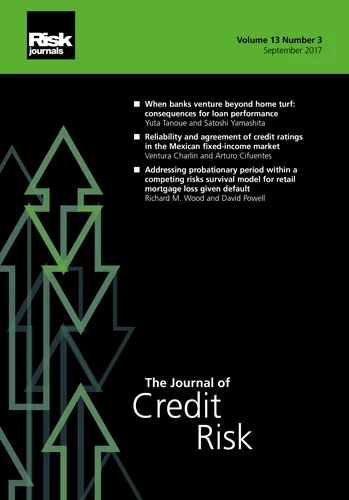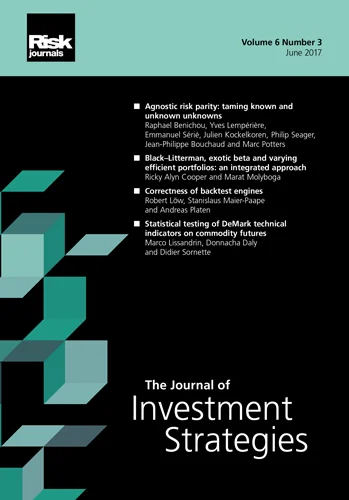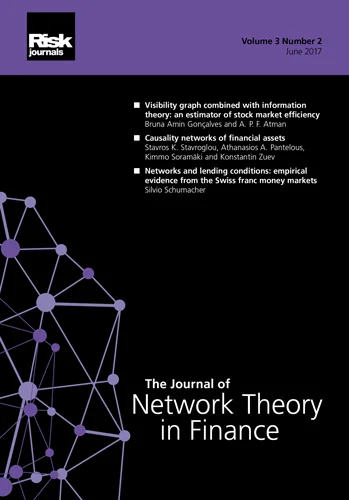Journal of Risk
ISSN:
1755-2842 (online)
Editor-in-chief: Farid AitSahlia
Volume 10, Number 1 (September 2007)
Editor's Letter
Stan Uryasev
University of Florida
We take the opportunity of the 10th anniversary of The Journal of Risk to look back on its successes and forward to many more.We would like to thank everyone who has been involved over the years, helping the journal to become established in the market and continue to be the leading source of cutting edge research on risk management.We would particularly like to thank Philippe Jorion for contributing a guest editorial letter about founding the journal and talking about his experiences during his time as Editor-in-Chief.
In the future we anticipate covering all aspects of risk as described in the aims and scope of the journal. However, as new issues and regulations come to the fore, we want to address important topics when they emerge and therefore strive to include state-of-the-art review articles on occasion. To help with the quick dissemination of concepts into the practical arena, we invite contributions that illustrate their implementations in a manner that offers new insights beyond their original theoretical advances. Topics of particular interest include economic capital planning in view of regulatory requirements, correlation of tail events, especially as they pertain to market and credit risk and liquidity risk.
This issue contains papers that were presented at the International Conference on Financial Engineering organized by the Risk Management and Financial Engineering Laboratory at the University of Florida in March 2006. The conference covered a broad range of topics related to financial engineering as illustrated in the papers presented here as well as in the full program available online at http://www.ise.ufl.edu/rmfe/events/qf2006/program.html. Owing to space constraints, only five papers are included in the print version of this issue, although all nine that were peer-reviewed and selected will appear online at the same time. Financial decision makers rely on probabilistic models to evaluate risky investments but often have little guidance as to which model to adopt. In their paper, "How much is a model upgrade worth?", Sandow, Huang and Friedman develop an explicit formula that captures the dollar value of upgrading from one probabilistic model to another. In particular, they illustrate its application to creditrelated and utility-maximization problems.
Mortgage issuers have long seen the benefits of reselling their loans on mortgage-backed securities markets. However, given the complexity of these markets, they need an efficient procedure to maximize their revenues. Wang and Uryasev develop here a model that can generate efficient frontiers under CVaR constraints through a standard mathematical software program. On the other hand, Rasmussen and Zenios consider mortgage options from a homebuyer's perspective. Using Danish data, they show how one can take advantage of various loan products to form a CVaR-constrained optimal portfolio, even in the face of origination and termination costs.
Next, the article of AitSahlia and Runnemo is concerned with the efficient and accurate pricing of American options in a jump-diffusion model that prices jump risk. They show that for practical instances, one can accurately approximate the optimal exercise boundary with log-linear splines with only a few knots, which can then be used efficiently in the decomposition formula for American options. Finally, Yamada addresses the pricing of weather derivatives and their hedge effects for energy businesses. In particular, he develops a pricing technique applicable to over-the-counter markets that explicitly accounts for the relation between power consumption and temperature.
The Journal of Risk's 10th Anniversary Year
Philippe Jorion
This is the 10th anniversary year for The Journal of Risk, which was first published in fall of 1998. My first editor's letter announced the launch of this journal following the emergence of risk management as a new profession in the mid-1990s. In response to financial disasters such as Orange County, Barings and Metallgesellschaft, and under the constant prodding of regulators, the industry developed standardized methods to measure financial risk. Today, risk management has totally changed the way institutions view financial risk. Methods developed to measure market risk have spread to credit risk, operational risk and enterprise-wide risk.
The rapid expansion of research into financial risk management explained the need for a new journal solely devoted to this field. Building on the enormous success of Risk magazine, editors at Risk Waters Group (now part of Incisive Media) decided to launch a new journal solely devoted to the latest research in financial risk management. The objective was to publish full-length articles that could not find a place in Risk magazine due to space constraints. Thus, The Journal of Risk was launched.
The goal of The Journal of Risk was, and still is, to provide a dedicated medium for the dissemination of academic and practitioner research into financial risk management. All published work is peer-reviewed by an eminent board made up of world-class academic scholars and industry experts, ensuring the highest level of quality and standards. Since its launch, The Journal of Risk has established itself as the leading specialized journal in this field.
I am honored to have had the opportunity to contribute to the field of risk management and to serve as Editor-in-Chief of The Journal of Risk from 1998 to 2006.
Papers in this issue
A perturbative formula to price barrier options with time dependent parameters in the Black and Scholes world
Algorithms for handling CVaR constraints in dynamic stochastic programming
How much is a model upgrade worth?
Efficient execution in the secondary mortgage market: a stochastic optimization model using CVaR constraints
A canonical optimal stopping problem for American options under a double exponential jump-diffusion model
Optimal early withdrawal and valuation of finite-horizon fund protection options
Valuation and hedging of weather derivatives on monthly average temperature
Well ARMed and FiRM: diversification of mortgage loans for homebuyers
A parallel time stepping approach using meshfree approximations for pricing options with non-smooth payoffs








